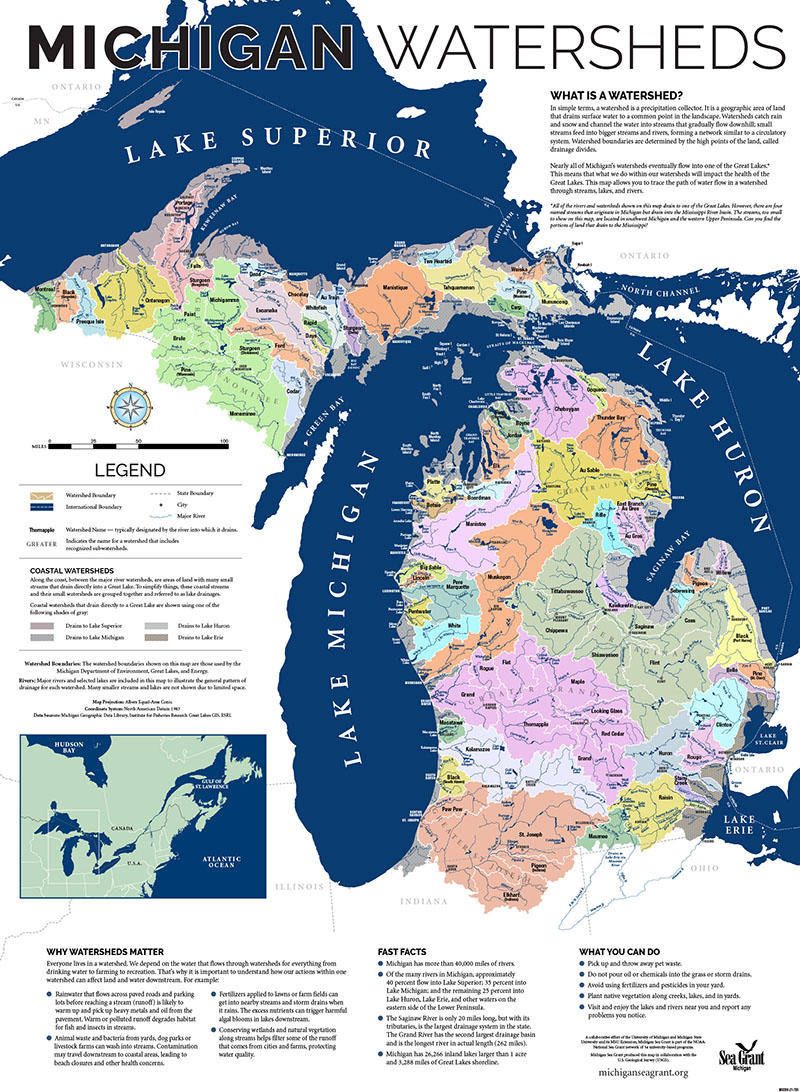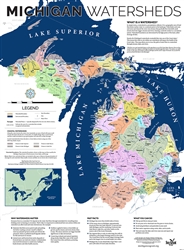When it comes to Facts about MI lakes, Michigan stands as a significant freshwater resource on the global stage. Home to an astounding 94,000 square miles of Great Lakes surface area, Michigan’s lakes contain approximately 20% of the world’s freshwater supply. This resource represents one of North America’s most important natural assets, with a shoreline stretching an impressive 11,000 miles when including islands. The sheer volume is remarkable – a staggering 6 quadrillion gallons, enough to submerge the entire continental United States under nearly 10 feet of water.
The facts about MI lakes reveal their tremendous ecological and geographical significance. These lakes aren’t just vast bodies of water; they’re complex ecosystems supporting approximately 34 million people across both the United States and Canada who call the Great Lakes basin home. The combined surface area of Michigan’s lakes exceeds the total area of Connecticut, Massachusetts, New Hampshire, New Jersey, New York, Rhode Island, and Vermont combined. Such impressive statistics highlight why these lakes remain one of Michigan’s defining natural features and why understanding MI lakes is crucial for environmental conservation efforts nationwide.

- Watershed map of Michigan, illustrating the vast and interconnected system of Great Lakes and inland water bodies. Source: michiganseagrant.org
Facts about MI lakes extend beyond their impressive size to their fascinating geological history. These massive bodies of water are relatively young in geological terms, having been carved and shaped by powerful glaciers approximately 10,000 years ago. As the massive ice sheets retreated at the end of the last ice age, they left behind enormous depressions that filled with meltwater, creating the Great Lakes system we recognize today. This relatively recent formation makes the lakes distinctly different from ancient bodies of water and explains many of their unique characteristics that scientists continue to study.
The ecological significance of MI lakes cannot be overstated, as they harbor extraordinary biodiversity. More than 3,500 species of plants and animals call these lakes and their surrounding watersheds home, including over 170 species of fish. From the iconic lake trout and walleye to the invasive sea lamprey and Asian carp, the lakes represent a complex web of native and introduced species. Among the Great Lakes, Michigan ranks 15th in size globally, yet their ecological importance far exceeds what their ranking might suggest, providing critical habitat for countless organisms that have adapted to these unique freshwater environments.

- Image not specified for this section. Source: michiganseagrant.org
The management of Facts about MI lakes presents unique challenges due to their vast geographical reach. These massive inland lakes touch eight U.S. states (Minnesota, Wisconsin, Illinois, Indiana, Michigan, Ohio, Pennsylvania, and New York) and two Canadian provinces (Ontario and Quebec), creating a complex web of jurisdictions and stakeholders. This shared resource requires unprecedented cooperation across national and state boundaries. The Great Lakes Water Quality Agreement, signed in 1972, represents one of the most significant collaborative efforts between the United States and Canada to protect and restore these vital bodies of water.
Further strengthening the protection of MI lakes, the Great Lakes Compact was established in 2008, creating a framework for states to regulate water diversions outside the Great Lakes basin. This agreement recognizes that lakes and their watersheds function as integrated systems that require holistic management approaches. Beyond governmental bodies, countless stakeholders including anglers, teachers, homeowners, commercial fishermen, policy officials, scientists, and business owners all have vital interests in lake management decisions. This multilayered governance structure aims to balance economic development with environmental conservation, ensuring these inland lakes remain healthy for future generations.
Michigan’s watershed systems form the foundation of the state’s water health, directly impacting Facts about MI lakes. A watershed encompasses all land where precipitation drains to a single body of water, from a tiny pond to one of the Great Lakes. These natural drainage systems follow the contours of the landscape rather than political boundaries, creating a connected network across the state. In Michigan, virtually all watersheds eventually flow into the Great Lakes, creating an intricate hydrological system where actions in one area inevitably affect water quality downstream.
The health of MI lakes depends entirely on responsible watershed management. As water moves across the landscape, it collects everything in its path – from natural sediments to agricultural runoff and urban pollutants. Michigan’s inland lakes serve as collection points for these watersheds, reflecting the environmental conditions of the surrounding land. Healthy watersheds provide crucial ecological services: reducing flood risks, supporting agriculture, filtering pollutants, mitigating climate change effects, and enhancing human wellbeing. This interconnectedness means that everyday actions of Michigan residents, from lawn care choices to agricultural practices, ultimately determine the health of the state’s lakes and the Great Lakes system they feed.
